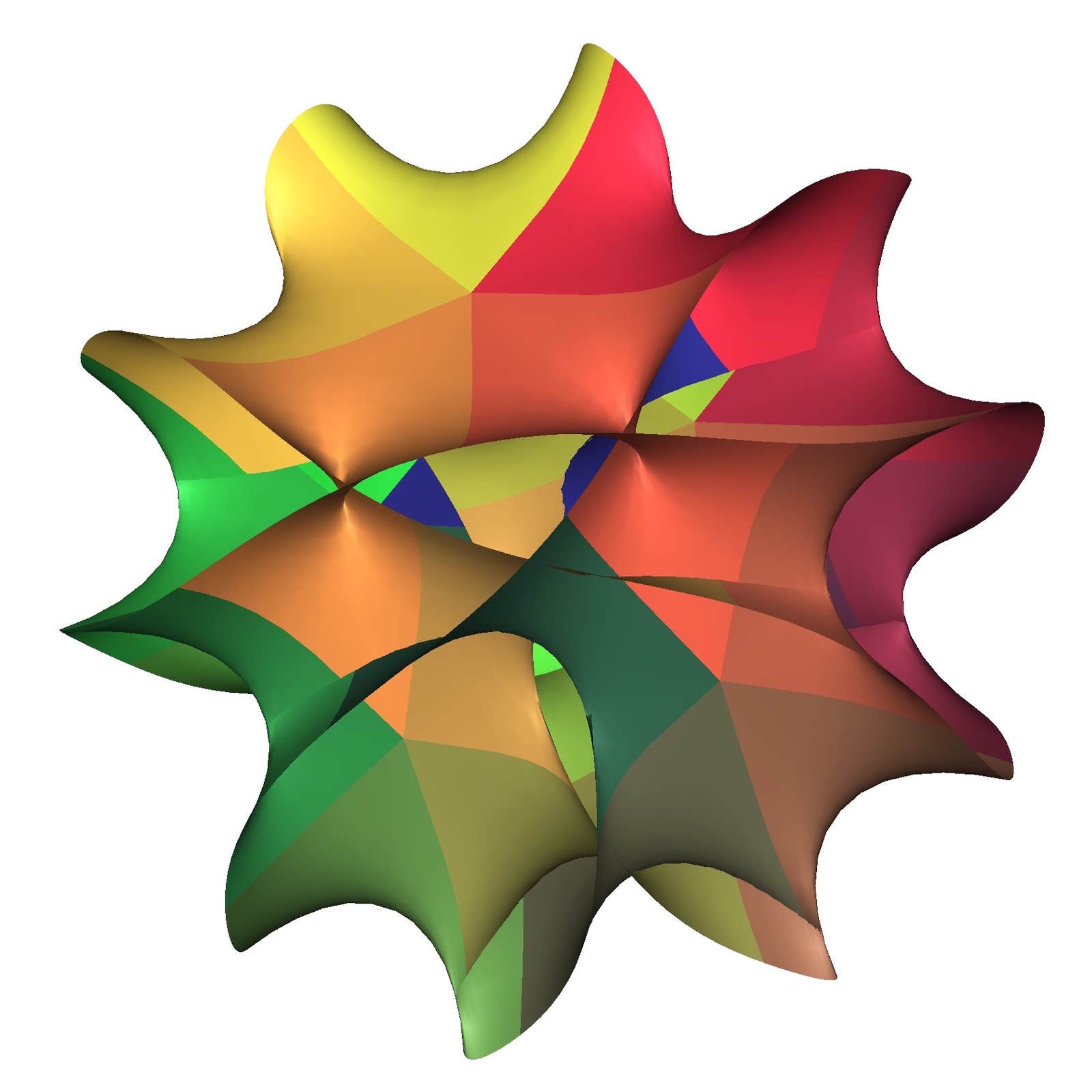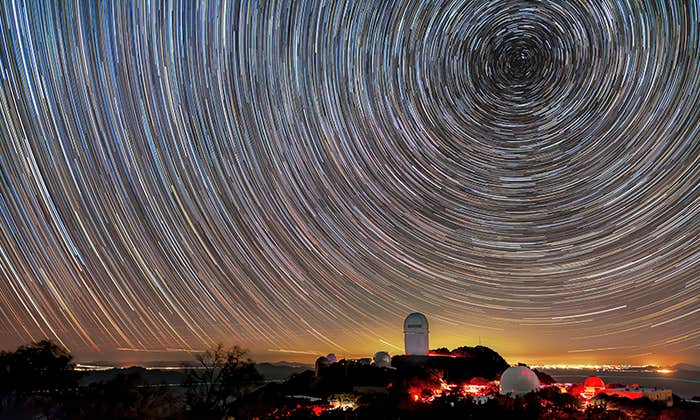In physics, we like theories that are simple and broad-ranging. By “simple,” physicists usually mean a mathematical theory that rests on as few postulates as possible; by “broad-ranging,” we mean theories that can describe a wide class of phenomena, even when apparently not related. A quintessential example is Einstein’s theory of general relativity. Resting on a handful of simple principles, it successfully describes planetary orbits in this (and any) solar system, black holes, gravitational waves, and the expansion of the universe.
When theories are simple and broad-ranging, physicists call them “beautiful.” Nobel laureates Steven Weinberg and Frank Wilczek have compared such theories with Mozart’s musical compositions, masterful and perfect constructions where, as if by divine revelation, every note is where it should be: Take one out and the composition crumbles. Likewise, beautiful theories have a mathematical integrity that seems to be revealing something deep about nature, a sort of hidden code of Creation: From the very large to the very small, the universe has many layers, each built upon its own mathematical description. Are these not parts of a larger composition, a single unifying tune resonating through all of nature?
So hope those who pursue a final theory, a theory that would weave together the many layers of physical reality into one mathematical wholeness. We can call this the ultimate Platonic dream, the quest for a single simple and broad-ranging theory of physics. Indeed, during the past four decades, the search for such a theory has inspired many of the brightest physicists in the world. But today we are seeing the limits of this Platonic thrust to mathematize nature, due to a lack of experimental validation and several theoretical obstacles—including the possibility of multiple universes and the troubling questions they pose.
Being creatures immersed in the passage of time, humans are dumbfounded by initial conditions.
The modern version of the unifying quest is string theory, which supposes that the fundamental entities in nature are vibrating tubes of energy instead of point-like particles of matter. Different vibrating modes correspond to the different particles we observe, just as different vibrating frequencies of a violin string correspond to different sounds. When I joined theoretical physics in the mid-1980s, the grand task was to find the unique solution to string theory: our universe with all its particles and forces. We believed success was just around the corner, that nature was indeed a mathematical code in a 10-dimensional spacetime, nine for space, one for time. Ideally, the six hidden spatial dimensions would determine the physics we observe in our common three: Twist them one way, we get one kind of universe; twist them another, and the universe is different. The appeal was the uniqueness of the solution—there would be one geometry of the extra dimensions, and this geometry would tell us all. No theory could be simpler and broader-ranging; no theory could be more beautiful.
Alas, it wasn’t meant to be. Fast-forward three decades, and the scenario has changed dramatically. Physicists were shocked to find, instead of a single solution, a huge number of solutions—by some estimates, a 1 followed by 500 zeros, each a different twist in the extra-dimensional space, each generating a different universe. Presumably, each one of these has its own set of fundamental constants, numbers such as the electron’s mass and charge and the strength of the gravitational attraction, which determine nature’s physical properties. Where’s our universe among such vast number of possibilities? We do know that if we tweaked such constants by very small amounts, life wouldn’t be possible: We wouldn’t be here. In other words, we live where we live because we couldn’t live anywhere else—our universe is one of the few that allows for our existence. True enough, but as a scientific argument this buys us very little. Worse, it sounds tautological. String theory went from being the theory that would mathematically prove the uniqueness of our universe to a theory that allows a countless number of possible universes, none more compelling than the other.
We need to reconsider the line of thinking that led us to this moment of crisis. The problem is rooted in a much deeper philosophical issue, that of the First Cause. Being creatures immersed in the passage of time, with a clear beginning and an end, humans have been forever dumbfounded by initial conditions. How could something come out of nothing? And what sets the properties of this something (read “values of fundamental constants”) at the beginning? Who ordered that? Who ordered us?
Our mistake is that, within a scientific context, these are the wrong questions to ask.
Physics works under a very clear framework. In order to determine the time evolution of a system, we need to state its initial conditions, the state of the system at time zero. This implies knowledge of the system at the beginning, something we obtain through measurement. In cosmology, that becomes impossible. We may restrict the initial conditions and the values of the fundamental constants given what we know about the universe today, but we can’t be sure that our conclusions are in any way final. The clues we gather today about the universe’s distant past can only give us a fragmented picture of what happened. The multiverse only pushes the issue of initial conditions to a higher level, without solving it.
Physics is an expression of intellectual humility.
Any theory that attempts to determine unambiguously the initial conditions of the universe and, with them, the values of the fundamental constants, is doing something physics is not cut out to do. Are we stuck then, having to accept the values of these constants for what they are? Within the current framework, yes. Attempts around this issue, even if inspiring, will amount to not much more than epicycles.
But all is not lost. The search for a simple all-encompassing theory has eclipsed a more enduring insight about the nature of physics. Physics is the building of an ever-changing, self-correcting description of natural phenomena. In its practice, it sets aside metaphysical expectations about the nature of reality, which have more to do with how we search for meaning as humans than with how nature actually works. In other words, physics is an expression of intellectual humility. We learn to live with ignorance and, in return, gain the ability to make progress incrementally.
So, it’s okay to live with the seeming arbitrariness of our present laws of physics, moving beyond the aesthetic dogma that simple is beautiful and beauty is truth. If physics is understood as a descriptive mode of explanation, free of the unifying quest, the angst of not knowing it all is exorcised. Maybe our current dilemma is a symptom of something bigger, a deep change in the methodological nature of physical theories. We may have to see them historically, tossing aside First Cause explanations and timeless truths as fruitless pursuits. Quite possibly, the nature of physical theories mirrors their own narrative construction, piecewise and gradual, creations of our imperfect and incomplete grasp on physical reality. And there’s nothing wrong with that.
Lead image: Example of a Calabi-Yau manifold in string theory. Andrew J. Hanson, Indiana University.





























